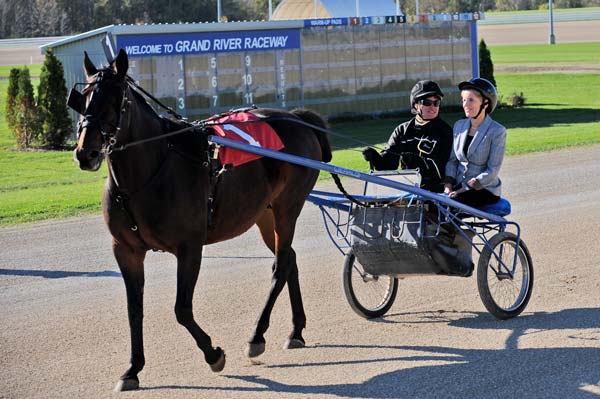Region’s presentation to council, however, calls for the status quo
Citing greater than expected collision records, the Region of Waterloo is recommending improvements to the intersection of Lobsinger Line and Hergott Road in St. Clements, including alterations to the curb and elimination of parking spaces for visibility.
But that wasn’t enough for a group of St. Clements residents who appeared at Wellesley council chambers on Tuesday night demanding a new traffic light for the troubled intersection.
In a presentation to councillors, Bob Henderson, manager of transportation engineering for the region, noted that the intersection saw eight collisions between 2007 and 2011, twice the expected number. A study by the region found that eastbound trucks had difficulty turning left when a southbound vehicle is stopped, and half the collisions came from eastbound truck drivers waiving southbound drivers through.
Despite these numbers, Henderson made the case for retaining the current two-way stop, noting that traffic volume is not high enough at peak periods to justify either a four-way stop or a traffic signal (6,900 vehicles enter the intersection per day on average). The region has also ruled out an overhead flashing beacon.
Instead, the region is recommending removing seven parking spaces from near the intersection, while also re-aligning the sidewalk curbs on the north side of Hergott Road to allow a wider approach for vehicles turning north.
The proposal met with skepticism from councillors, including Coun. Paul Hergott, who worried what a lack of traffic lights could mean for preschool children at the intersection (Henderson offered that other measures, including crossing guards, could be investigated). Hergott added that Heidelberg has a traffic light despite comparable traffic levels.
Coun. Herb Neher objected to the tentative proposal to make curb realignments in 2022, as part of a preexisting regional construction project planned for Hergott Road.
“I just have a problem with that – that’s a long time for a solution,” said Neher. “Statistics can change drastically over that period of time.” Henderson replied the region would account for changes over time.
Even stronger objections came from St. Clements residents, who cited instances of traffic rerouting to backstreets to avoid the busy intersection.
“I personally believe [traffic lights] are the only answer,” said Jerry Herrgott, who praised the traffic light in Heidelberg. “I travel it frequently, and people use it very well. I feel so safe there. Prior to the lights, if we were coming out … that was a bad, bad intersection as well.”
Terry Koudys added, “While the numbers on paper may not meet the criteria, I would venture to say that every single resident entering that intersection enters it tentatively, and with a sense of fear.”
Henderson replied, “Sometimes that’s not a bad thing. When you make people complacent, and let the electronics do the thinking for them, unfortunately electronics don’t make people safer. They can make them feel more safe, which has the opposite effect.”
He added later, “When it comes to my gut feeling and engineering judgment, I’ve seen plenty of intersections where we install traffic lights and accident/collision experience gets worse.”
The question period closed when Mayor Ross Kelterborn asked Henderson to write a formal recommendation in time for the next council meeting on October 29, including a comparison between the traffic in St. Clements and Heidelberg. The township’s community services department will then make a recommendation to Wellesley council, which will then be taken to regional council.









